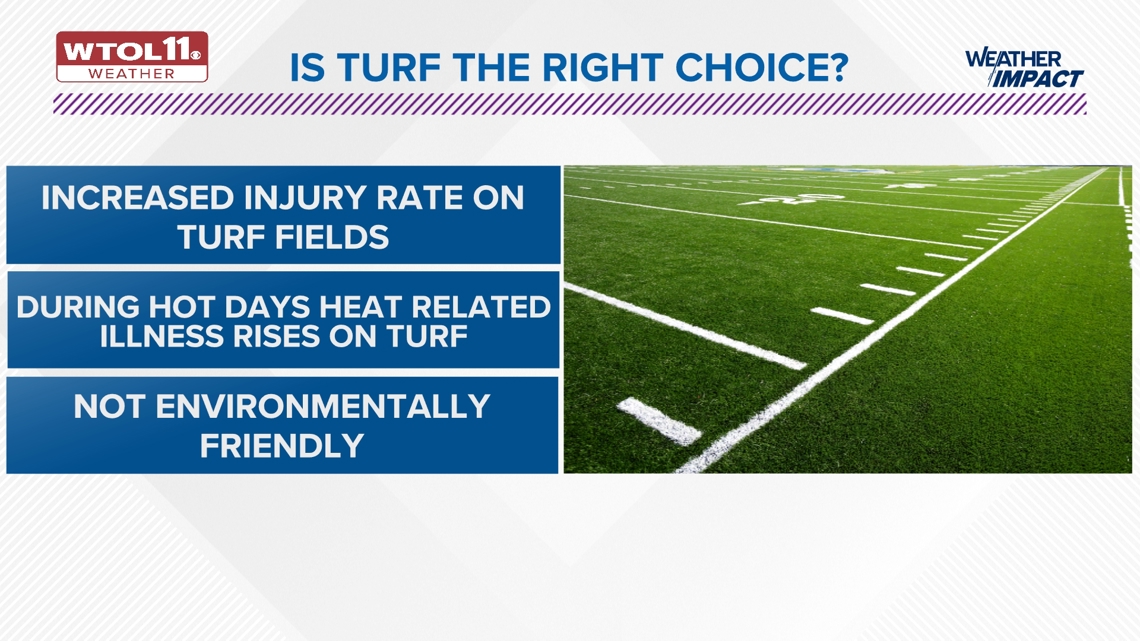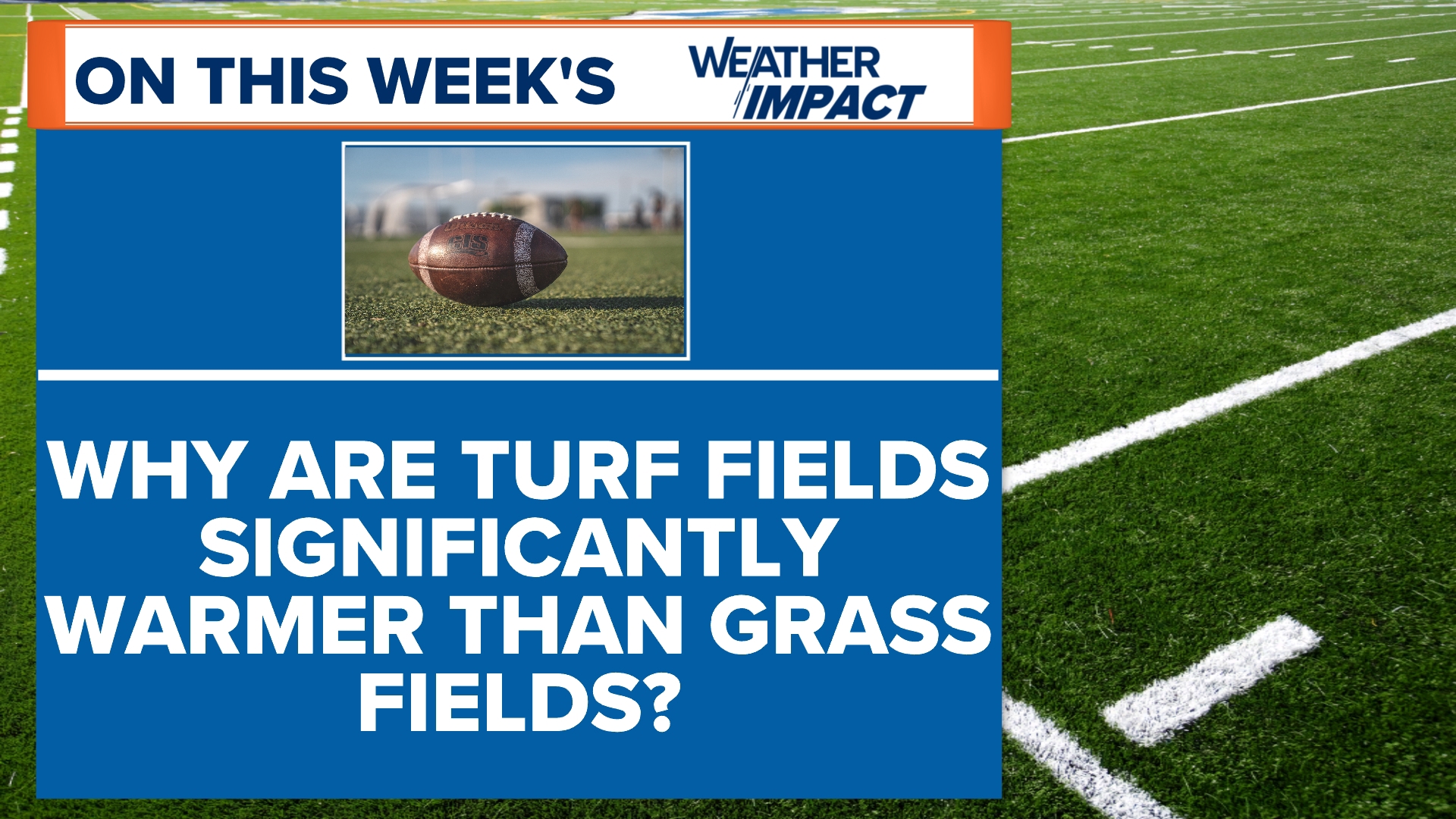TOLEDO, Ohio — With football and soccer season recently underway, many athletes are hitting the field for practices, games and extra work to put on the best show for the season ahead.
Of course, we know it is the start of meteorological fall, but at almost halfway through September, many areas have not yet experienced the taste of football and soccer weather, which is that cool and crisp feeling in the air.
Several regions over the past couple of weeks have experienced dangerous heat waves and well-above-average temperatures for most of late August and early September, as we have not seen any real signs of fall roll in just yet.
With outdoor sports in full effect and our region experiencing warmer temperatures than usual, this can put extra stress on athletes - especially football players who must protect themselves with about 20 to 25 pounds of extra pads and equipment that keep them hotter and feeling heavier.
One factor that can slip people's minds when it comes to keeping athletes heat safe is the surface on which these athletes play. That is exactly what we are breaking down this week. On this week’s Weather Impact, we are covering why artificial turf fields are significantly warmer than natural grass fields.
Turf vs. grass
Before we dive into why one is significantly warmer, let's level the playing field and break down the purpose of each type of field.
Many high schools, colleges and professional teams use diverse types of grass on which to play. According to the Cornell University College of Agriculture and Life Sciences, the major cool-season grass species used for sports fields include Kentucky bluegrass, perennial ryegrass and tall fescue. These grasses are selected based on their ability to withstand traffic (wear and tear) and stress (from drought and heat), recovery from field use (recuperative ability), good color, desirable growth characteristics, resistance to pest pressure (insects, weeds and diseases) and maintenance requirements. Each of these surfaces feels and looks different.
Next, we are going to break down the diverse types of artificial turf for sports fields. According to CC Grass, which is one of the the largest manufacturers of artificial grass in the world, there primarily are three different types of turf. These are: monofilament, textured and fibrillated grass. All these combined make up the artificial turf playing services for the majority of sports across the country, with different textures and patterns available.

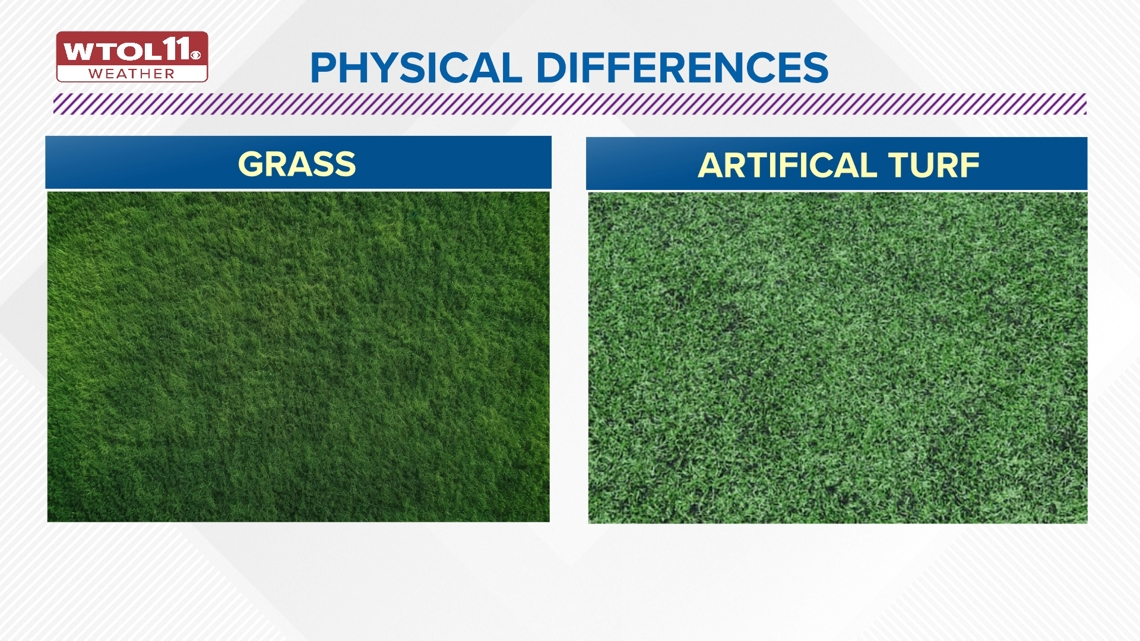
Heat impacts with turf
One of the more dangerous weather impacts we face occurs on our football, lacrosse and soccer fields each year. Dangerously hot temperatures can occur on turf fields across the country as summer conditions stick around longer.
When it comes to turf vs. grass fields, it's remarkable to see how much hotter turf is. If you have ever been on a turf field, you'll note that most of them are made up of not only plastic material, but also billions of rubber pellets to keep the field up to par. These rubber pellets are black, and on a sunny hot day, the color black is what absorbs the most heat out of any color.
One study of weather impacts and turf fields at Brigham Young University showed that if the air temperature is at 85 degrees for a high that day, the turf field is significantly warmer. The average temperature on a turf field throughout an entire day was 117 degrees, which is entirely too hot for any athlete to safely perform at a high level. What was even more mind-blowing was that there was a high temperature of 157 degrees on the surface of this turf field. For health reasons, no athlete should be subject to play on these surfaces at any point.
The study contrasted the temperatures of the turf field with the grass field, revealing much lower temperatures on the grass field. The average grass field temperatures were only 78 degrees, so we are talking about an almost 40-degree difference between average temperatures. The highest temperature recorded on the grass field was only 88 degrees. This means the turf field was 69 degrees hotter than the grass surface, which means that can be the biggest difference between a heat-related illness and just a hot summer day.

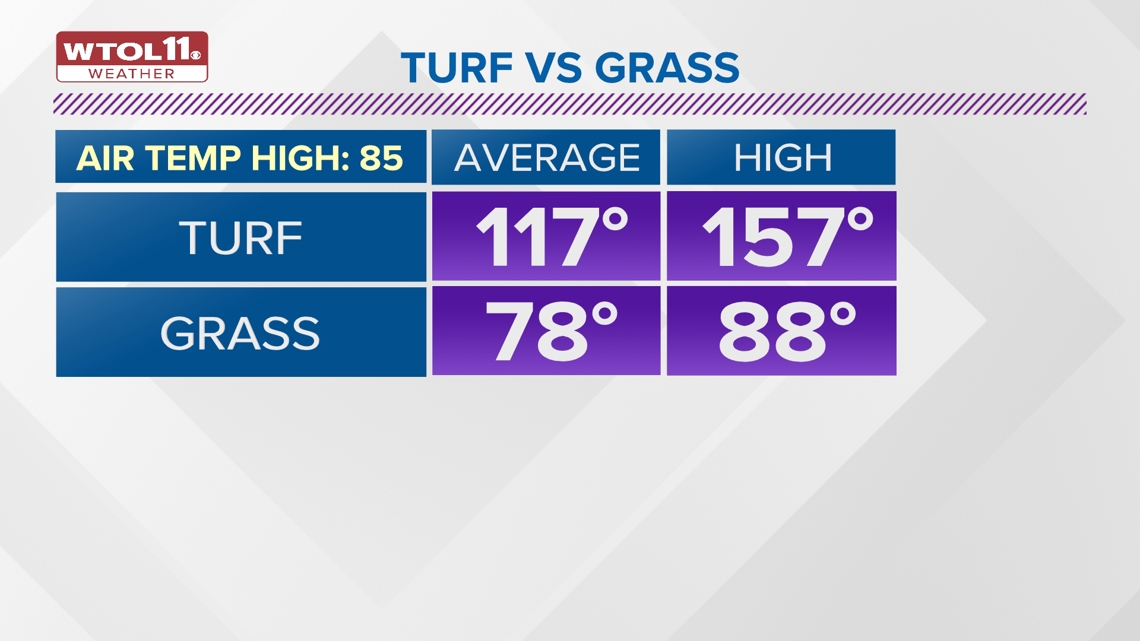
Pros of turf and grass fields
Although our warmer climate will continue to be impacted by warmer conditions, especially on sports fields, there are some pros for having grass fields and turf fields.
Some pros of having turf are that it can be very cost-efficient for many programs, whereas grass fields require more maintenance and expense. With turf, there is little that must be fixed when it comes to the durability of turf, meaning there is not much maintenance that must be done to keep up turf fields. Many schools and professional leagues use artificial turf for the durability and cost-effectiveness.
With grass, participants are exposed to natural elements during play, unlike turf, which can be chemical-based and manufactured. As previously stated, another pro is that a grass field provides a much cooler surface than turf.
Cost-wise, when establishing a field, turf will cost significantly more to install, while grass is not particularly expensive on the back end for most.

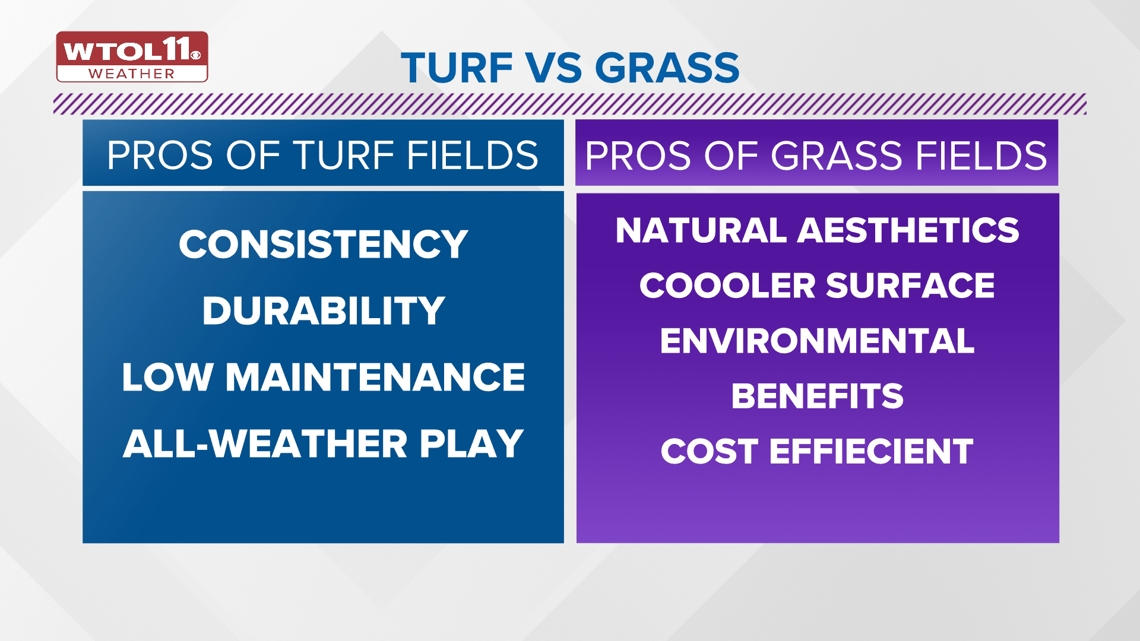
Turf and a warmer climate
Several studies show turf fields are creating their heat islands, especially with enclosed stadiums. According to the Office of the Commissioner for Sustainability and the Environment, artificial turf is an increasingly popular choice for sports fields and residential yards. This is attributed to its perceived benefits as being maintenance-free, low-cost and less water-intensive than natural turf.

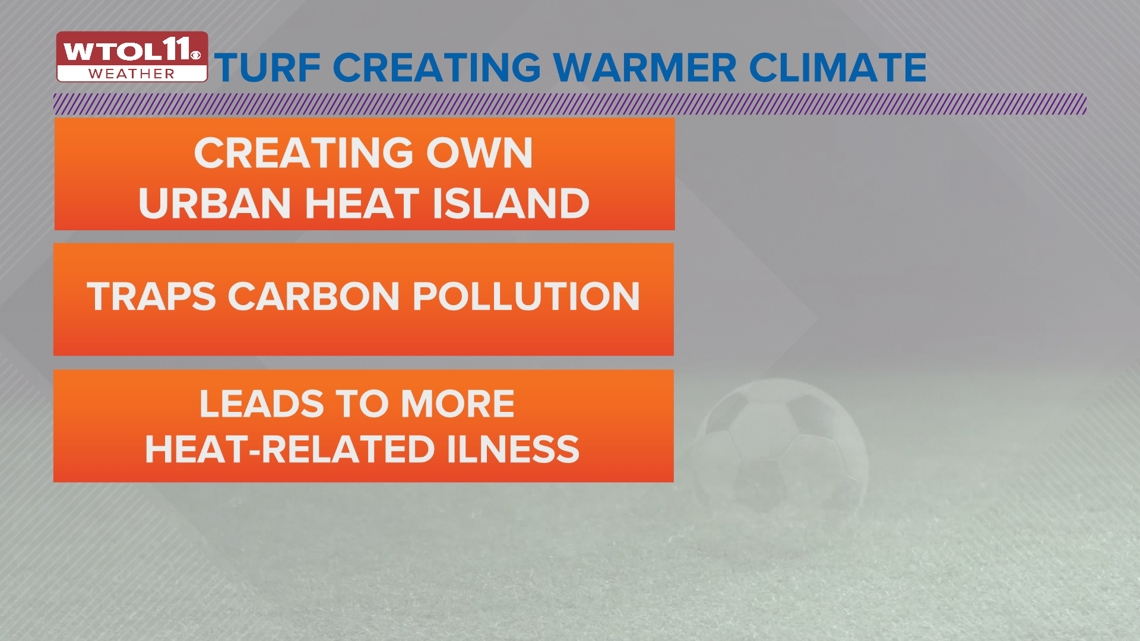
Concerns over turf go deeper than just warming our climate but extend into the health of our environment and athletes as well.
According to the National Library of Medicine, most analyses of the health and environmental hazards of artificial turf usage have focused on crumb rubber, although each synthetic layer can provide additional sources of exposure to hazardous chemicals.
Over the years, if our climate continues to warm, this is projected to continue to be a problem for athletes during the summer months with turf fields becoming too hot to play on. In the future, experts predict more sports moving to completely grass fields to reduce carbon emissions.

